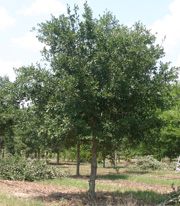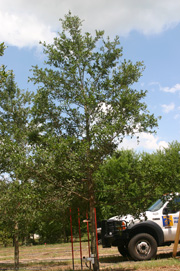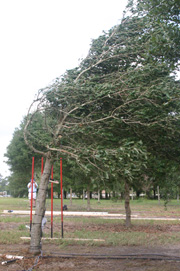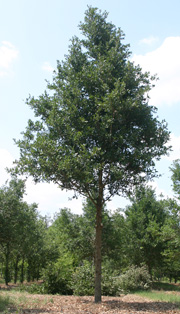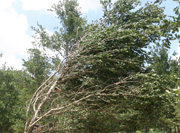Home > Pruning shade trees > Pruning reduces wind damage
Pruning reduces wind damage - a research project
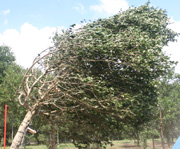 Here is a summary of new research on effects of pruning trees on wind damage. Five trees were pruned by either doing nothing (controls), reducing crown size, raising the crown, or thinning the crown for a total of 20 trees. The same amount of foliage was removed from each tree. The four treatments are described below in photographs showing one tree of each before and during testing. Trees were blown with winds reaching 120mph. These results support usage of structural pruning as a preventive method to reduce tree damage.
Here is a summary of new research on effects of pruning trees on wind damage. Five trees were pruned by either doing nothing (controls), reducing crown size, raising the crown, or thinning the crown for a total of 20 trees. The same amount of foliage was removed from each tree. The four treatments are described below in photographs showing one tree of each before and during testing. Trees were blown with winds reaching 120mph. These results support usage of structural pruning as a preventive method to reduce tree damage.
Data summary with statistics
Closeup of trunk bending at 120 mph
Videos of trees blowing with different pruning treatments
| Lower trunks on trees not pruned moved statistically more than all pruned trees. Upper trunks on raised trees moved the same as non-pruned trees. Average angle of trunk from the vertical on 5 trees in 120mph wind is listed under each photograph. | ||
| Pruning treatment | Before testing | During testing |
| No pruning | 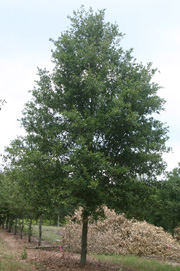 |
Lower trunk angle at 120mph = 27 |
| Reducing |
Crown was reduced in height using a reduction cut. |
Lower trunk angle at 120mph = 10 |
| Thinning |
Crown was thinned by removing primary branches back to trunk. |
Lower trunk angle at 120mph = 12 |
| Raising |
Crown was raised be removing lowest branches. |
Lower trunk angle at 120mph = 10 |


